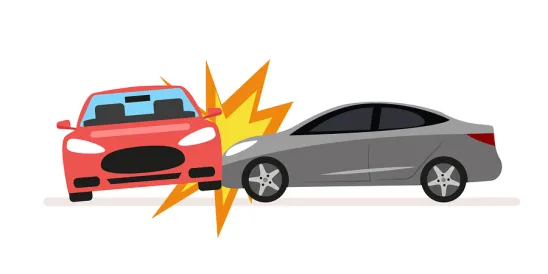The New Jersey Supreme Court has rejected the validity of an entire category of damages in motor vehicle accident suits, with the potential implications reaching far beyond. The Court held that permitting suits for only medical expense damages between the $15,000 reduced PIP limits and the statutory standard $250,000 injects a fault-based determination into the No-Fault system, necessarily increasing court congestion and overall costs of insurance.
New Jersey’s “No-Fault” automobile insurance scheme has been the subject of repeated reforms over the past 40 years. On March 26, 2019, the New Jersey Supreme Court rejected the validity of an entire category of damages in motor vehicle accident suits, with the potential implications reaching far beyond.
BACKGROUND
Since New Jersey’s “No-Fault” automobile insurance scheme was first enacted in the early 1970s, New Jersey’s Legislature and courts have continuously modified the mechanics of that system to ensure efficacy of its end goals − to strike an appropriate balance between providing accident victims prompt compensation for accident-related losses and reducing insurance costs to the motoring public at large. A key feature of New Jersey’s No-Fault system is a statutory requirement that automobile insurers provide Personal Injury Protection (PIP) benefits, i.e., firstparty benefits covering injured motorists’ medical expenses regardless of fault. To further the goal of cost containment, the No-Fault system provides that evidence of the amounts of medical expense benefits collectible or paid under a standard automobile insurance policy is inadmissible at a trial in those situations when an injured motorist seeks recovery for bodily injuries. The No-Fault system further provides that motorists are precluded from suing for non-economic losses, i.e., pain and suffering damages, in most cases unless the motorist either sustained a qualifying injury or elected to pay an increased premium in exchange for exemption from that limited-tort injury threshold, known colloquially as the “verbal threshold.”
The most recent large-scale legislative modification of the No-Fault system, 1998’s Automobile Insurance Cost Reduction Act (AICRA), was enacted in an attempt to ensure access to automobile insurance coverage for lower-income motorists while continuing to apply downward pressure to the overall cost of automobile insurance. Up until 1998, $250,000 was the standard PIP coverage limit. One significant feature of AICRA was the ability of motorists to voluntarily select PIP benefit levels as low as $15,000, below the statutory standard coverage of $250,000, in exchange for reduced premiums.
Since AICRA was enacted, there has been wide-ranging debate and conflicting lower-court opinions as to whether medical expenses incurred by accident victims in excess of the motorists’ voluntarily reduced PIP coverage but less than the statutory standard $250,000 coverage should be admissible at trial.
Haines v. Taft and Little v. Nishimura
In a consolidated appeal, on March 26, 2019, New Jersey’s Supreme Court addressed one aspect of this debate for the first time. Both plaintiffs were involved in motor vehicle accidents, but were unable to substantiate qualifying injuries to overcome the verbal threshold. Additionally, both plaintiffs elected reduced PIP benefits of $15,000, and incurred medical expenses in excess of those PIP limits, but less than $250,000. Both plaintiffs proceeded to trial to attempt to recover those medical expenses in excess of their PIP limits without claims for pain and suffering damages. The defense in both trials successfully moved to bar the medical expense damages. The trial courts essentially held that permitting those claims was contrary to the intent of the statute and that it would be inequitable to permit the plaintiff to overcome the voluntary choice to obtain a reduced premium in exchange for reduced PIP coverage. The Appellate Division reversed, finding that the plain language of the statute permitted those claims to proceed and that the Legislature’s intent was not frustrated by permitting those claims because there was no double-recovery by the plaintiffs.
The Supreme Court, after finding that the plain language of the statute permitted more than one reasonable interpretation, and after conducting a detailed review of the legislative history, reinstated the trial courts’ determination that the plaintiffs' suits could not proceed.
The Court held that permitting suits for only medical expense damages between the $15,000 reduced PIP limits and the statutory standard $250,000 was contrary to the intent of the Legislature in that it injects a fault-based determination into the No-Fault system, necessarily increasing court congestion and overall costs of insurance. Moreover, the Court rejected the notion that the Legislature intended the absurd result of permitting an increased recovery for insureds who voluntarily elect reduced insurance coverage.
The Court conspicuously limited its decision to cases involving suits for medical expense damages only, and explicitly invited the Legislature to revisit the issue should they disagree with the Court’s determination.
WHAT COMES NEXT?
On its face, this decision invalidates claims for medical expense damages proceeding without accompanying claims for bodily injuries if those claims are for less than $250,000. More interesting is the potential impact of the Court’s decision on those claims for medical expense damages, less than $250,000, with accompanying claims for bodily injury. Although the Court limited its decision to the facts before it, it appears that the overarching analysis of the Court arguably should apply with equal force to claims involving bodily injury. If the Court’s decision is so extended, the scope of recoverable damages in suits involving motor vehicle accidents would be dramatically reduced. We can expect a flurry of motion practice on this issue to ensue, to be followed by further Appellate and/or Supreme Court analysis of the potential extension of this decision to those cases involving bodily injury.
The Legislature has yet to take the Court up on its suggestion to directly address the outcome of this decision. Bills have been introduced to remove the option of reduced PIP coverage to (1) compel carriers to provide more specific information in buyers’ guides relating to actual costs of electing lower PIP benefits, and (2) increase minimum levels of reduced PIP to $25,000 from $15,000.
We can expect further legislative activity, particularly if the Court’s decision is extended to claims involving bodily injury.




 />i
/>i

